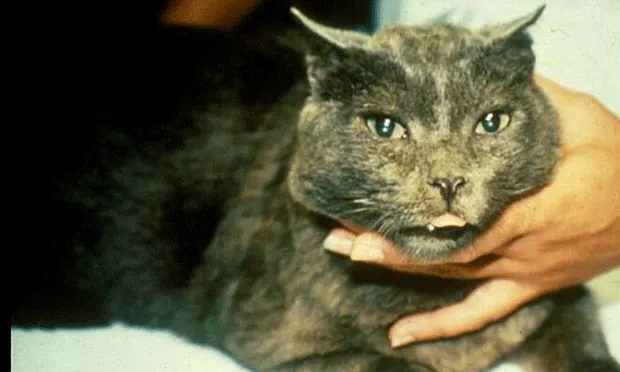Insulin Resistance in a Diabetic Cat
Rhonda L. Schulman, DVM, Diplomate ACVIM (SAIM), Southern Arizona Veterinary Specialists and Emergency Center,Tucson, Arizona

A 10-year-old, male, neutered domestic shorthair presented for poorly regulated diabetes mellitus. The owners reported ongoing polyuria and polydipsia. The cat had gained 0.5 kg over the past month, to the current weight of 4.3 kg, and was FIV-positive.
At the time of presentation, the cat was receiving 7 units of Humulin Lente insulin twice daily. Physical examination was unremarkable, with the exception of massive hepatomegaly on abdominal palpation. A minimum database, including CBC, chemistry profile, and urinalysis, was obtained. The CBC was within normal limits. The chemistry profile revealed mild hypokalemia, hypophosphatemia, hypercholesterolemia, and severe glucose elevation (670 mg/dl, reference range 65 to 129 mg/dl). Urinalysis did not indicate any significant abnormalities other than glucosuria. Abdominal ultrasonography confirmed the enlarged liver but did not show any discrete masses. A glucose curve was performed to better evaluate glycemic control. Over a 16-hour period, the lowest blood sugar level was 487 mg/dl. Based on the poor response to insulin, insulin resistance was suspected. Resistance is a concern whenever a cat is not responding to doses of insulin greater than 1 U/kg.
Ask Yourself...
There are many potential causes of insulin resistance. One of the first things to rule out is incorrect insulin administration. In this case, an inadequate response was seen after administration by hospital personnel. In addition to showing the lack of response to insulin, the glucose curve helped rule out insulin overdose leading to Somogyi phenomenon (too much insulin, resulting in hypoglycemia). The body responds to the typically profound hypoglycemia by releasing hormones, which counteract the effects of insulin and result in a rapid increase in blood glucose. The resulting high blood glucose leads to signs typical of poorly regulated diabetes mellitus. By checking blood glucose every 2 hours, we were able to verify that no periods of hypoglycemia occurred.

Photo courtesy of Dr. Thomas Graves

Photo courtesy of Monique Mayer
Concurrent Disease Effects
Virtually any disease process can result in insulin resistance. Typical causes in cats include bacterial infection, pancreatitis, renal failure, and hyperthyroidism. The patient was evaluated with thoracic radiographs, thyroxine measurement, abdominal ultrasonography, and urine culture. None of these tests revealed any potential causes of insulin resistance. Other causes that should be considered include hyperadrenocorticism and acromegaly.
Hyperadrenocorticism was ruled out due to a subnormal response on a corticotropin-stimulation test, and normal-sized adrenal glands on ultrasonography supported this conclusion. If hyperadrenocorticism were more strongly suspected, a low-dose dexamethasone suppression test would have been appropriate.
Clues in Conformation
Acromegaly results from excessive production of growth hormone, usually caused by a pituitary tumor. Growth hormone counteracts the effects of insulin, leading to resistance. Acromegaly should be suspected in any poorly regulated diabetic cat that gains weight. Poorly regulated diabetics tend to lose weight; acromegalic animals gain weight due to the anabolic effects of growth hormone. Physical examination of cats with acromegaly may reveal generally large animals; cats with big heads, tongues, or feet; and organomegaly.
This patient gained weight despite poor diabetes control and had hepatomegaly. Acromegaly was diagnosed on the basis of elevated levels of IGF-1 (159 nmol/L, normal range 5 to 70 nmol/L). Growth hormone directly controls IGF-1 secretion; IGF-1 concentrations reflect growth hormone concentrations during the preceding 24 hours and are used to monitor growth hormone levels. Diagnosis of acromegaly is ideally confirmed by identification of a pituitary mass on MRI or CT, but in this case the owners declined advanced imaging. Treatment for acromegaly is aimed at decreasing the size of the pituitary mass. Radiation therapy is the recommended treatment, but the owners chose to treat only the diabetes. Increasingly larger doses of insulin were administered. The cat was somewhat controlled on 11 units of insulin twice daily and ultimately died of pyelonephritis several months later.
Take-Home Messages
Cats with insulin requirements exceeding 1 U/kg per dose should be evaluated for insulin resistance.
Glucose curves are useful to rule out Somogyi phenomenon.
Acromegaly should be considered in cats with poorly controlled diabetes that are gaining weight.